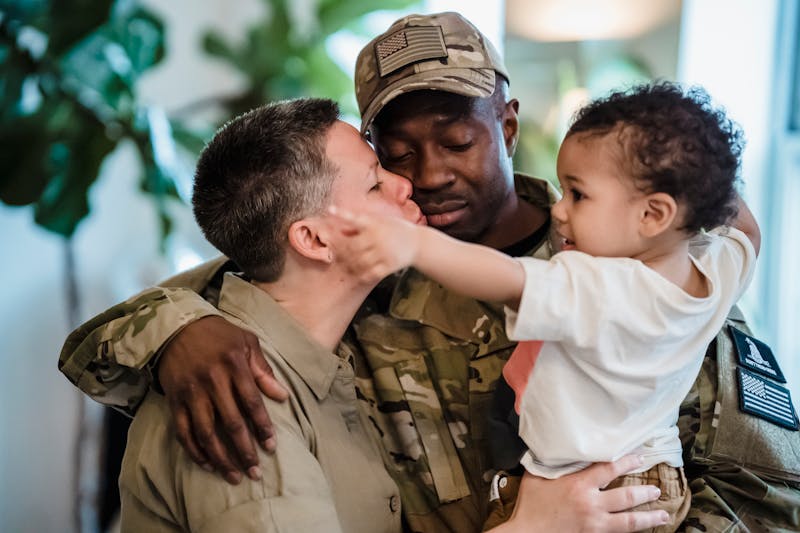VA Special Monthly Compensation (SMC) Level R is one of the highest levels of support offered by the Department of Veterans Affairs for veterans with severe service-connected disabilities. While standard VA disability benefits provide important financial assistance, SMC Level R is reserved for veterans who need a significant amount of daily care. Qualifying for any SMC level means the VA recognizes a veteran’s special needs, but Level R is specifically for those requiring the highest degree of aid and attendance.
Often called the “higher level” of aid and attendance, SMC R1 goes beyond the regular SMC Level L benefit, providing extra compensation that can significantly improve the quality of life for veterans and their families. Understanding the requirements is essential, as the process can be challenging—but for those who qualify, the added support can be life-changing. Here is exactly what it takes to be eligible for SMC R1 and what you need to know about this type of benefit.
Eligibility Criteria for VA SMC R1
There are two payment levels within SMC R: R1 and R2. R1 applies when care can be provided by a family member or non-medical caregiver, while R2 is for situations requiring a licensed medical professional. To qualify for R1, veterans must meet strict criteria related to their disabilities and their need for substantial daily assistance.
To be eligible for VA SMC R1, veterans must first meet the basic requirements for VA disability compensation. This means they must have a service-connected disability that has received at least a 30% disability rating. However, the requirements for SMC R1 go well beyond this basic threshold.
The primary eligibility criteria for SMC R1 include:
- The veteran must require regular aid and attendance due to service-connected disabilities.
- The veteran must have additional severe disabilities that would qualify them for another level of SMC (such as SMC Level O or SMC Level P) if considered separately.
It’s important to note that the need for aid and attendance must be directly related to service-connected disabilities. Non-service-connected conditions, no matter how severe, cannot be considered when determining eligibility for SMC R1.
Specific Medical Conditions for SMC Level R1 Qualification
While the VA considers each case individually, certain medical conditions are more likely to qualify a veteran for SMC R1. These conditions typically involve severe impairments that significantly impact a veteran’s ability to perform daily activities independently.
Some medical conditions that may qualify a veteran for SMC R1 include:
- Quadriplegia or paralysis of all four limbs
- Severe traumatic brain injury (TBI) requiring constant supervision
- Blindness in both eyes with additional severe disabilities
- Loss of use of both arms and legs
- Severe burns covering a large percentage of the body
These conditions are not an exhaustive list, but they represent the level of severity typically required for SMC R1 eligibility. The key factor is that these conditions result in the need for regular aid and attendance, along with additional severe disabilities.
The Importance of Aid and Attendance in SMC Level R1
Aid and attendance is a critical component of SMC R1 eligibility. This term refers to the need for regular assistance from another person to perform basic daily activities. For SMC R1, the level of aid and attendance required is typically more extensive than that needed for lower levels of SMC.
Activities that may require aid and attendance include:
- Bathing and maintaining personal hygiene
- Dressing and undressing
- Feeding oneself
- Using the bathroom
- Adjusting prosthetic devices
- Protecting oneself from hazards or dangers in the daily environment
The need for aid and attendance must be consistent and ongoing. Occasional help or assistance that’s only needed for short periods doesn’t typically qualify a veteran for SMC R1.
Additional Severe Disabilities Requirement
One unique aspect of SMC R1 is the requirement for additional severe disabilities beyond those causing the need for aid and attendance. These additional disabilities must be significant enough that they would qualify the veteran for another level of SMC if considered separately.
For example, a veteran might require aid and attendance due to paralysis of both legs, which could qualify for SMC Level L. If they also have a complete loss of use of both arms, which could qualify for SMC Level M, they might be eligible for Level R1.
This “stacking” of severe disabilities is what sets SMC R1 apart from other levels of Special Monthly Compensation. It recognizes the exceptional challenges faced by veterans with multiple severe disabilities.
The Application Process for SMC Level R1
Applying for SMC R1 can be a complex process. Veterans or their caregivers need to provide detailed medical evidence demonstrating both the need for aid and attendance and the presence of additional severe disabilities.
The application process typically involves the following steps:
- Gather medical evidence: This includes doctor’s reports, hospital records, and statements from caregivers detailing the veteran’s disabilities and care needs.
- Complete VA Form 21-2680: This form, the Examination for Housebound Status or Permanent Need for Regular Aid and Attendance, must be filled out by a doctor or medical professional.
- Submit a claim: This can be done online through the VA’s eBenefits portal, by mail, or in person at a VA regional office.
- Attend VA examinations: The VA may schedule additional medical examinations to assess the veteran’s condition.
- Wait for a decision: The VA will review the claim and supporting evidence before making a decision.
It’s often helpful to work with a Veterans Service Organization (VSO) or an accredited attorney when applying for SMC R1. These professionals can help navigate the complex application process and ensure all necessary evidence is submitted.
The Impact of SMC R1 on Veterans and Families
SMC R1 can have a significant positive impact on the lives of severely disabled veterans and their families. The increased compensation can help cover the costs of necessary care and equipment, reducing financial stress and improving quality of life.
For many veterans, SMC R1 allows them to receive care at home rather than in an institutional setting. This can lead to better health outcomes and improved mental well-being. Family members who act as caregivers may also benefit, as the additional compensation can help offset lost wages or cover the costs of respite care.
It’s important to remember that while the application process for SMC R1 can be challenging, the potential benefits make it worthwhile for eligible veterans to pursue this compensation. Find out more with AllVeteran.com, and take our free medical evidence screening today.
 AllVeteran.com Advisors
AllVeteran.com Advisors
With expertise spanning local, state, and federal benefit programs, our team is dedicated to guiding individuals towards the perfect program tailored to their unique circumstances.


















